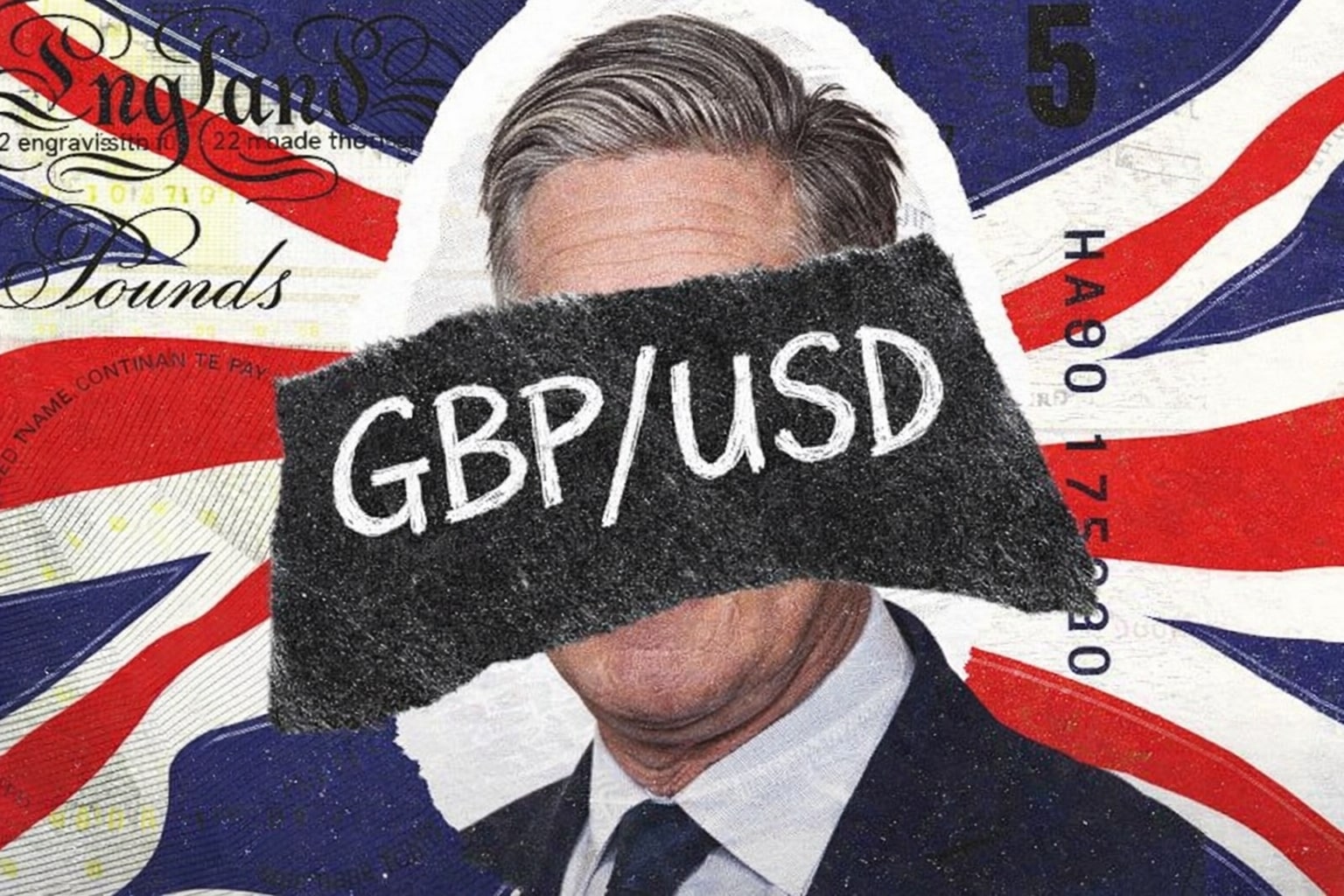
Bitcoin Nears $70K: Election Uncertainty and Fed Rate Cuts Fuel BTC’s Path to $100K
With BTC around $68,000, Election Volatility, Fed Rate Cuts, and Rising Demand Point to a $100K Target | That's TradingNEWS
Bitcoin's Dynamic Market Landscape Amid U.S. Election and Fed Meeting: An In-Depth Analysis
Election Uncertainty Fuels Bitcoin Volatility
The imminent U.S. presidential election has positioned Bitcoin (BTC) in a highly volatile state, as investors grapple with potential policy shifts that could reshape the crypto landscape. With polls indicating a tight race between Kamala Harris and Donald Trump, Bitcoin’s recent sharp movements highlight the market's sensitivity to political developments. Early in the week, BTC surged near its all-time high, reaching $73,500, only to fall back to $68,345.5 as traders reassessed their positions ahead of the election.
Bitcoin's price swings are emblematic of a broader trend across risk-driven markets. Should Trump win, the market anticipates a pro-crypto regulatory environment, which could spark a rally pushing BTC closer to the $80,000 mark. However, a Harris victory could bring stricter oversight, potentially cooling investor sentiment and pressuring BTC toward $50,000 in the short term. With prediction markets showing fluctuating odds, the uncertainty is likely to sustain Bitcoin's volatility in the immediate aftermath of the election.
Bitcoin’s Macro Influence: The Fed’s Role in BTC Price Movements
In tandem with election anxieties, Bitcoin’s performance is also being shaped by the Federal Reserve's monetary policy. The upcoming Fed meeting has drawn significant attention, as the market widely expects a 25-basis point rate cut. With U.S. inflation persisting and labor market indicators cooling, any hints from Fed Chair Jerome Powell regarding further cuts could catalyze another rally in BTC. Lower interest rates typically weaken the U.S. dollar, thus enhancing Bitcoin’s appeal as a hedge against fiat depreciation.
Should the Fed signal a prolonged easing cycle, Bitcoin could capitalize on increased demand from investors seeking alternative stores of value. Conversely, a more cautious Fed could temper BTC’s momentum, particularly if the dollar remains resilient. In the context of Bitcoin’s perceived “digital gold” status, macroeconomic developments surrounding inflation and monetary policy are poised to play a pivotal role in BTC’s trajectory.
Institutional Investment and Spot Bitcoin ETFs: A Path to $100,000?
Institutional inflows into Bitcoin have surged as spot Bitcoin ETFs gain traction, adding a new layer of credibility and accessibility for large-scale investors. Analysts suggest that the entry of institutional players is a potential catalyst for BTC to hit the coveted $100,000 mark, potentially by late 2024 or early 2025. The ETF approvals have paved the way for increased capital inflow, driving greater adoption among institutions previously deterred by regulatory and custodial hurdles.
Historically, institutional adoption has often preceded major price rallies in Bitcoin. If this trend continues, and with the U.S. election and Fed decisions favoring crypto-friendly stances, BTC could break through the $100,000 barrier. The halving event slated for 2024, which will reduce the supply of newly minted BTC, further supports a bullish outlook, as past halvings have typically led to substantial price increases within a 12-18 month window.
Bitcoin’s Technical Landscape: Key Levels and Market Sentiment
Technically, Bitcoin remains in an uptrend, maintaining levels above its 50-day and 200-day moving averages. Currently oscillating around $68,800, BTC has shown resilience at key support zones, notably around $64,000. If BTC manages to break above $69,500, it could retest the $70,000 resistance, and possibly surge past $73,600, a level closely watched by technical analysts.
Indicators suggest that a breach above these resistance levels could drive BTC towards the next target of $77,000. However, failure to maintain support at $64,000 could lead to a deeper correction, with potential retracements to $60,000 or even $58,000, where significant buyer interest is anticipated. Speculators and technical traders are closely monitoring these zones, as they could trigger increased buying or selling pressure depending on BTC’s movement in response to election and Fed outcomes.
Liquidation Zones and Open Interest Data: Gauging Market Risks
Recent data from CoinGlass reveals heightened open interest in BTC futures, reflecting a surge in speculative activity. With BTC open interest surpassing $40 billion, the market has seen increased volatility, especially around critical liquidation levels. The heatmap shows significant liquidation zones around $73,000 and $65,000, areas that could prompt abrupt price swings if breached.
These liquidation clusters indicate that any aggressive moves in BTC could trigger a cascade of stop-losses, particularly among leveraged traders. If BTC breaks below $65,000, the cascading liquidations could accelerate a price drop toward $60,000, amplifying the volatility further. Conversely, a push above $73,000 could trigger a short squeeze, propelling BTC to new highs.
Bitcoin’s Limited Supply and Global Demand Drivers
Bitcoin’s intrinsic scarcity remains a core aspect of its appeal, with only 21 million BTC ever to be mined. Approximately 19 million BTC are already in circulation, and this finite supply is increasingly attractive to investors as global economic uncertainties rise. In countries with volatile fiat currencies, particularly in emerging markets, BTC has become a preferred store of value, driving cross-border transactions and remittances. This growing adoption among retail and institutional investors alike reinforces BTC's long-term bullish outlook.
In parallel, Bitcoin’s role as a hedge against currency devaluation has made it a favorable asset for high-net-worth investors and central banks looking to diversify away from the U.S. dollar. Given rising debt levels in major economies and an anticipated loosening of monetary policy, demand for BTC could continue to rise, especially as inflationary pressures persist globally.
Election-Driven Market Behavior: Past Trends and Future Predictions
Historically, U.S. elections have been significant drivers of Bitcoin's price movements. Following past elections, BTC has exhibited considerable appreciation, a trend some analysts expect to continue post-2024. Bitcoin surged approximately 12,000% after the 2012 election and saw a 478% increase in the 12 months following the 2020 election. Extending these trends, a 47.8% gain post-election could see BTC approach $103,500 by late 2025.
While each election brings unique factors, the pro-crypto stances from both U.S. presidential candidates have created optimism within the crypto market. Analysts at Bernstein project that BTC could hit $200,000 by 2025, driven by inflation hedging, fiscal expansion, and sustained institutional inflows. This projection assumes continued adoption of spot Bitcoin ETFs and a supportive regulatory landscape, regardless of the election outcome.
Bitcoin Mining and Energy Efficiency in Focus
With rising demand, Bitcoin mining has also come under scrutiny due to its energy consumption. Major mining operations are increasingly shifting to renewable energy sources, responding to environmental concerns while reducing operational costs. As the network approaches the next halving, reduced miner rewards are expected to increase competition, encouraging miners to seek more efficient energy sources.
This trend toward sustainable mining could impact BTC’s price indirectly, as environmentally conscious investors may view it more favorably, further increasing its appeal as a digital asset. Additionally, mining difficulty is expected to increase post-halving, creating a scarcity effect that could amplify BTC’s price as supply growth slows further.
The Bottom Line: Navigating Bitcoin’s Path Amid Complex Catalysts
With a confluence of factors at play, Bitcoin’s market dynamics remain complex yet promising. The U.S. election, Federal Reserve’s monetary policy stance, and the upcoming BTC halving event collectively create a bullish foundation for Bitcoin. As BTC sustains an upward trajectory, supported by institutional adoption and increasing global demand, the cryptocurrency’s long-term potential looks robust.
BTC’s technical indicators and growing institutional interest suggest that while short-term volatility is inevitable, the structural upward trend may continue. Investors should monitor critical price levels, liquidation zones, and market responses to macroeconomic signals. Bitcoin’s evolving role as a safe-haven asset and a decentralized store of value places it at the intersection of traditional finance and emerging digital economies, reinforcing its significance as a key asset in today’s economic landscape.
That's TradingNEWS
Read More
-
PYPL Stock Price Forecast - PYPL at $59.91; Is It a Bargain or Value Trap?
18.12.2025 · TradingNEWS ArchiveStocks
-
XRP Price Forecast: XRP-USD Slides Below $2 as Sellers Target the $1.80–$1.90 Zone
18.12.2025 · TradingNEWS ArchiveCrypto
-
Oil Price Forecast - Oil Stalled Near $56–$60 as Venezuela Blockade Clashes With Oversupply Outlook
18.12.2025 · TradingNEWS ArchiveCommodities
-
Stock Market Today: Nasdaq, S&P 500 And Dow Jump As CPI Cools And MU Stock Rockets
18.12.2025 · TradingNEWS ArchiveMarkets
-
GBP/USD Price Forecast - Pound Holds 1.34 as BoE’s 3.75% Rate and Weak US CPI Pressure the Dollar
18.12.2025 · TradingNEWS ArchiveForex


















